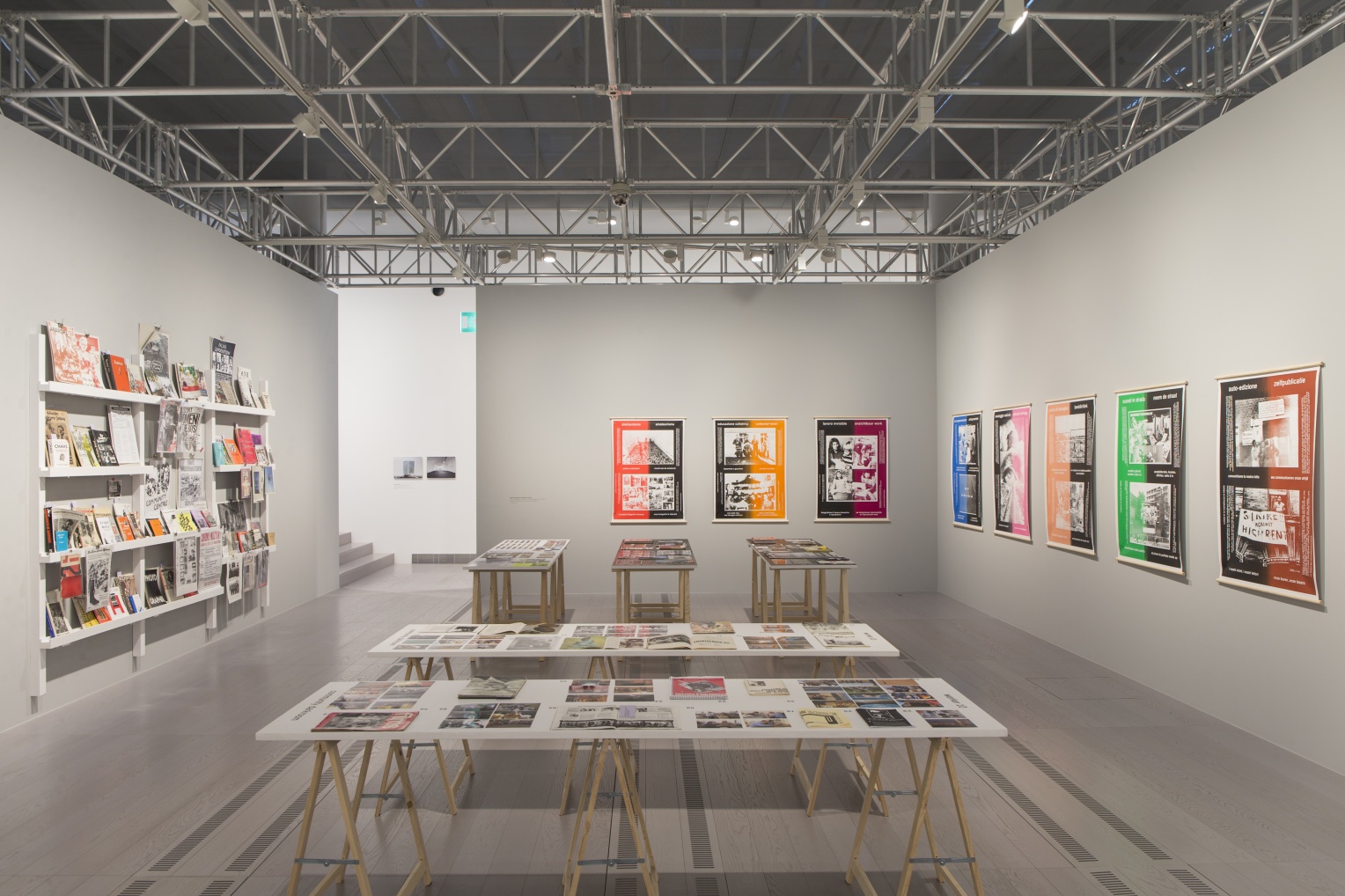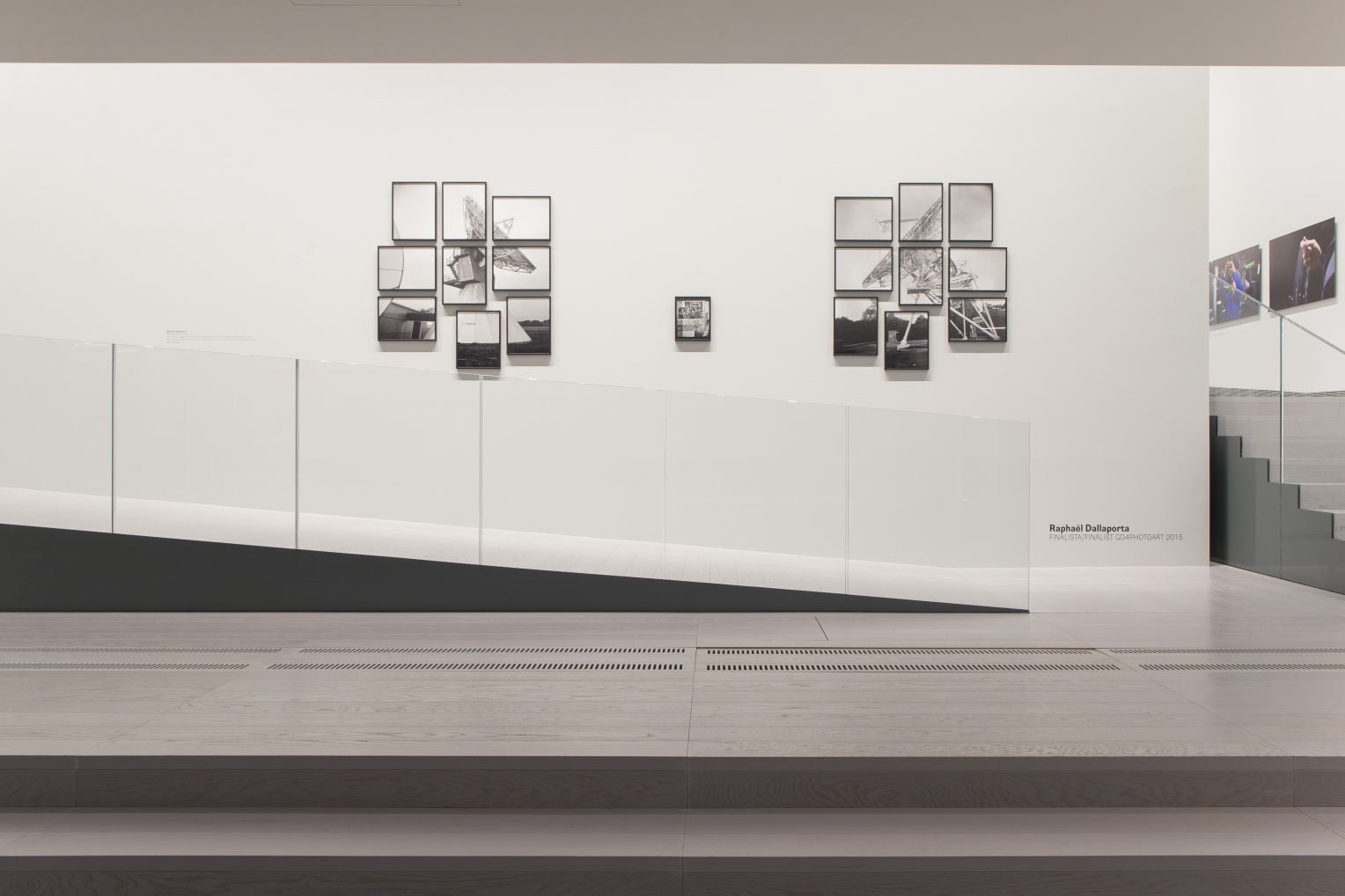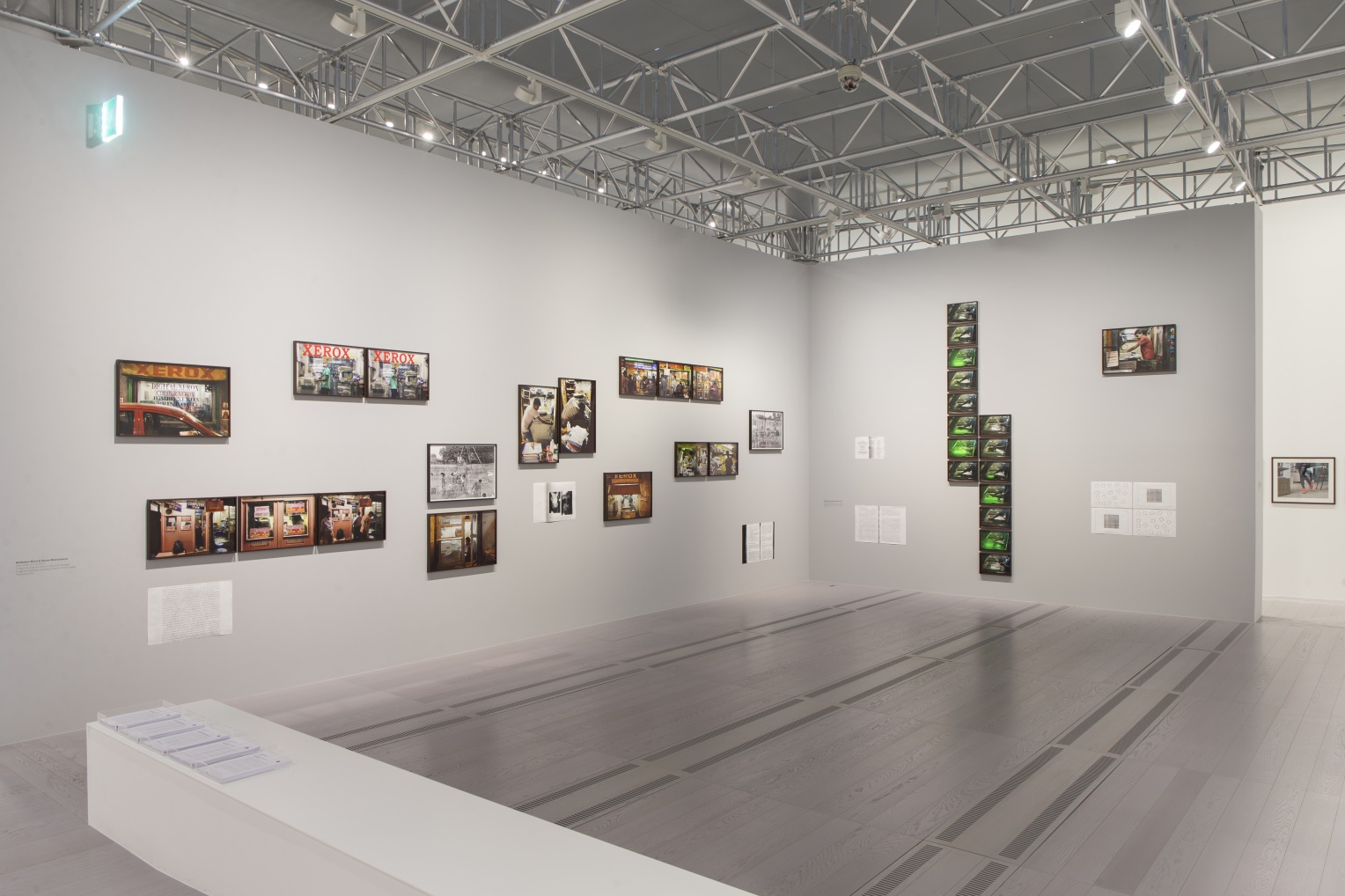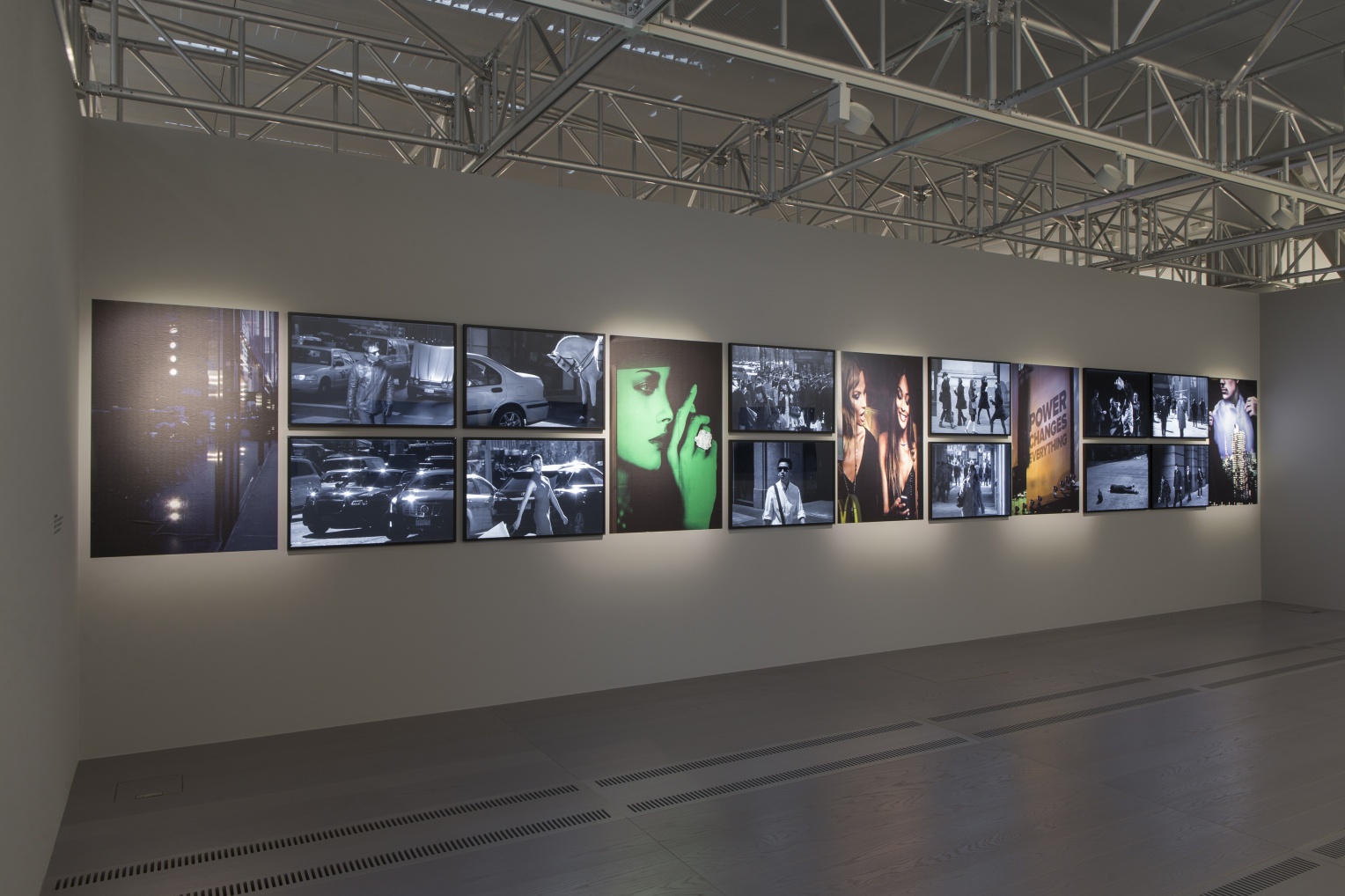MAST Photo Galley contributes two exhibitions to FotoIndustria 2015. Both open today with all the other FotoIndustria exhibitions, but they will stay longer, will be opend until January 10, 2016, as part of the MAST program.
In the photo gallery we show the GD4PhotoART Arward 2015. GD4PhotoArt is a competition for young photographers. The subject is industry, its architectures, products, workers, staff, work processes and conditions, and of course its influence on today’s modern society and the environment. The four finalist this year are: Marc Roig Blesa, Raphaël Dallaporta, Madhuban Mitra and Manas Bhattacharya and Óscar Monzón.
Raphaël Dallaporta has become known for his longterm projects concerning the acting of us human beings. He was working with mine clear commandos in « Antipersonel », with Laywers (in « Esclavage domestique »), oder with archeologs in « Fragile ». Since 2011 he shows interest in space related themes. He concentrates on artefacts of communication, for example radar antennas, big sattelite dishes etc. and thematizes progress and memory at the same time. Here he deals with a big postwar collaboration project between Germany and France. Symphony was a communications satellite system, the first one in Europe. It has considerable importance as a forerunner of gps, precursor of the mobile communications revolution, ancestor of the Ariane space program. But today any smart phone is stronger than the big systems they developped in the sixties. What remains are the big satellite dishes as dinosaures of early space communication.
Madhuban Mitra and Manas Bhattacharya
Madhuban Mitra (* 1972) and Manas Bhattacharya (*1977) are based in Kolkata, India and work together across a range of medias including photography, video, animation and text. In there project at MAST they visualize the photocopy shops as a unique phenomenon in India. Housed in dingy, cramped rooms in small in alleys, backstreets and basements, life in these shops, mosten often called,after the copy machine company Xerox, revolves in a loop around the pulse of the Xerox machine. Constituting a micro-economy the photocopy centres provide a livelihood to thousands of people. Operating outside legal parameters, dozens of books are photocopied in their entirety during a day in a single shop, making them an indispensable, though invisible part of the knowledge industry. Photocopying as knowledge provider. Madhuban and Manas mix the act of photographying with the act of photocopying.
Marc Roig Blesa (and his partner Rogier Delfos) graduated from the Gerrit Rietveld Academie in Amsterdam. His work over the last years is called “Werker” (or Werker Magazine, meaning worker magazine), a projekt and publication about photography and labour. The starting point is the Worker Photography Movement, a group of associations of amateur photographers in Germany in the 1920s, following the first socialist photography experiences in the USSR. Werker intends to reenact, to renew this practice, following their working methods, based on self-representation, self-publishing, image analysis, and collective learning processes. What forms does work take today, in the post industrial society? How is work represented in images today? These are some of their questions.
Óscar Monzón is part of the blank paper collective in Madrid. He became know with his series KARMA, a work about the relationship between man and machine for wich he received the First Book Award of Paris Photo-Aperture Foundation in 2013. His work at MAST carries the titel MAIA. It refers to the Sanskrit term which is translated as illusion or unreality. Monzon says himself: “ When you look at something through a camera and then translate it into an image, spaces can become scenarios and people or situations can be seen as performers or staged moments. Based on that I started to work taking street pictures and trying to find the influence of advertising fictions on reality.” His work seems to visualize Jean Baudrillards Simulation and Simulakrum theory. The border between concrete reality and the reality of signs has disappeared.




